Do you know what it means to “take the path of least resistance”? It means trying to get what we want in the easiest, fastest way possible.
What’s wrong with that?
Well, the harsh truth is that many of the most valuable things we want in life can only be gained through personal sacrifice and hard work. But to do that, we need to build our mental toughness so we can destroy our comfort zone and blast past old fears.
Take the path of highest resistance—This is the unwelcome message, the bitter medicine, that David Goggins offers us. Why does it connect with many people today? Maybe because our society has drifted so far in the other direction—always telling us to indulge, consume, follow our feelings, and forget the consequences.
No matter what your goals are, I think reading David’s story can show you tools for how to run farther, study longer, or contribute more of yourself to those around you.
About David Goggins
David Goggins (author website) overcame domestic violence, open racism and poverty, he almost failed high school, was 100 pounds overweight, and working as an exterminator of rats, raccoons and cockroaches.
Then he “got real” with himself and found the mental tools to transform his own life. He lost 106 pounds in 3 months, became a Navy SEAL after 2 failed attempts, ran countless ultramarathon races longer than 100 miles, and held the world record for “most pull ups in 24 hours.” Now he is a speaker and author who shares his story and tools with others.
1. Acknowledge Your Past: Goggins’ early life was full of unfair disadvantages
David Goggins grew up with a very tough childhood. Here is a very quick list of what happened in his early life that is shared in the book:
- Physical abuse. David’s father Trunnis often beat him, his brother, and their mother. They also worked hard every night at a roller skating arena owned by his father, so in the mornings David wasn’t able to stay awake in class. This dark reality was hidden because they lived in one of the wealthiest neighbourhoods in Buffalo, New York. The neighbours saw only his father’s big fake smile and the driveway full of luxury cars.
- Academic disadvantages. Then one day, David’s mother successfully escaped with him to their grandparent’s house in Brazil, Indiana. He was in Grade 2 and continued to struggle in school. He began cheating like crazy to make the grown-ups happy. He was diagnosed with ADHD, but years later discovered that years of abuse had given him toxic stress, a mental health condition that limits learning and memory.
- Traumatic experiences. During grade 4, his mother became engaged to a man named Wilmoth, who was even a healthy father figure to David. Just as life was beginning to look better, Wilmoth was shot and killed. (Childhood trauma is talked about more in books like The Body Keeps the Score (our summary). They often highlight the large ACE study in 1995 that found a strong connection between how many “adverse childhood experiences” someone has, and increased risk for attention problems, chronic depression, alcohol abuse and suicide attempts.)
- Open racism. David Goggins was often the only black person around. He began to notice this as a teenager in his small midwestern US town. While David had many white friends, he was also the victim of many experiences of open racism. The n-word was written in his textbook and on his car, and some people even said it to his face. One time rednecks stopped him on the roadside and threatened him with a gun. Over time, he became more rebellious, filled with “a haze of hate,” and continued cheating through school.
I think David shares all these stories from his early childhood for one clear reason: to demonstrate that we can change our life situation too, no matter our past. As an example from my own life, I grew up with severe social anxiety. It was so bad that I couldn’t even make eye contact with anyone. Psychologists say social anxiety is caused by a combination of biology and childhood experiences. But in the end, understanding the causes didn’t fix the problem for me. I only overcame it through voluntary uncomfortable exposure to my fears, combined with new ways of thinking. (This is basically an over-simplified explanation of “cognitive behavioral therapy,” (CogbTherapy.com) the most-proven treatment for social anxiety.)
David Goggins grew up suffering abuse and prejudice, which led to resentment and cheating in school. We should recognize our disadvantages, but never allow them to hold us back forever.
2. Get Real: Becoming personally accountable for your life, no matter what
Nearing the end of high school, David Goggins had one big dream: he wanted to join the Air Force as a Pararescue soldier. But he couldn’t do that unless he passed a test called the ASVAB (Military.com), which could not be cheated on. At the same time, the school sent a letter home saying that he would NOT be graduating high school with his current marks. Those were two huge wake up calls.
David clearly saw that if he didn’t change something fast, then his life would be terrible, and nobody else was coming to save him.
So here was the turning point: David went into his bathroom mirror and began talking to himself in a tough way, calling himself an embarrassment and a punk. He “got real” and honestly faced all his worst weaknesses, flaws and failures. He also began setting goals and writing them on notes all around the mirror. He did that little ritual every day and it changed his life.
After that, he began going to the YMCA gym at 5am. He was learning all day and night at the kitchen table, struggling to catch up after all the years of cheating. Most of all, David began facing all discomfort head on, rather than retreating into comfort. As a result, he successfully graduated high school, entered the Air Force, and the rage-filled resentment left his body.
I think David’s story shows the power of negative reinforcement as a tool for personal development. Today this has become almost taboo in our society. We are taught that every painful truth about ourselves must be coated with 10 layers of sugar and positivity to preserve our invisible self esteem. On the other hand, Goggins is not afraid to call himself fat when he’s fat, or dumb when he’s not putting in academic effort. Maybe a few minutes of painful personal confrontation like that is much better in the long run… than a lifetime of denial and regret? I’m not sure, but it’s something we should all think about.
More than 2000 years ago, the incredibly wise philosopher Seneca understood this when he said, “For a person who is not aware that he is doing anything wrong has no desire to be put right. (…) Be harsh with yourself at times.”
Read more in our summary of Letters from a Stoic by Seneca (coming soon)
Jordan Peterson, the famous professor of psychology, often talks about the power of myths to guide our lives. For example, one of the most popular kinds of myths is about a heroic knight entering a castle to slay a dangerous dragon. Modern stories like Harry Potter follow the same pattern. But why do those ridiculous stories connect with so many of us? Because they’re not just stories—they’re actually showing us a right way to live.
In our lives, we all have dragons of chaos. In other words, those complex problems that we are terrified to face, like unpaid bills, unresolved conflicts and personal inadequacies. Often we push these problems away with short term solutions, like passing a school test by cheating. But that really just feeds the dragon, making it bigger and stronger, eventually bringing us failure, bankruptcy, divorce, hopelessness, etc.
And so it’s always best to voluntarily face our dragons directly, rather than waiting for them to grow and devour us. In Jordan Peterson’s bestselling book, he shares rules to help us do that. Like Rule 1: “Stand up straight with your shoulders back” or Rule 8: “Tell the truth—or at least don’t lie.” That is exactly how David Goggins turned his life around—he stopped lying and faced life with his shoulders back.
Learn more in our summary of 12 Rules for Life by Jordan Peterson
David’s life changed one day in front of the bathroom mirror, when he finally decided to take responsibility. He admitted his personal flaws, wrote down new goals, and faced discomfort daily, which led to him successfully entering the Air Force for his dream career.
3. Pursue Discomfort: Finding something worth struggling for
David Goggins began his career in the military with great enthusiasm. However, he didn’t really know how to swim and Pararescue training included 10 weeks of water confidence exercises. He taught himself how to swim from a book, but simply couldn’t keep up with the training. He took the easy way out and quit.
4 years later, Goggins was in a bad place. Unhappy in his marriage. Working as an industrial pest exterminator of dirty rats and cockroaches. He escaped through food, eating boxes of donuts and giant chocolate shakes, until he was overweight by more than 100 pounds.
One day, while chugging a chocolate shake, David saw a TV show about the Navy SEALs training. He was absolutely inspired by their heroic efforts and even jealous of the pain they were going through. So he visited a Navy recruitment office and learned that he could only join the SEAL training program if he lost 106 pounds in 3 months. The first time he tried to run, he barely lasted one minute. But he pushed forwards. Soon he was exercising almost all day, eating a little chicken and veggies, and he lost the weight.
I think all of us often seem driven by short-term desires like comfort, pleasure and security… but those are not ultimately very satisfying. Most of us deeply wanted some kind of meaningful struggle in our lives. The popular author Mark Manson (our summary of his book) recently wrote, “Who you are is defined by what you’re willing to struggle for.”
Later in David Goggins’ life, a large part of his identity was being a Navy SEAL, because it represented the values that he was willing to struggle for.
Decades ago, the bestselling self help author Stephen Covey wrote about the difference between proactive and reactive people: “The ability to subordinate an impulse to a value is the essence of the proactive person. Reactive people are driven by feelings, by circumstances, by conditions, by their environment. Proactive people are driven by values—carefully thought about, selected and internalized values.” David Goggins was inspired into becoming a proactive person by the TV show that highlighted how Navy SEALs proactively overcome all obstacles in their way.
Learn more in our summary of The 7 Habits of Highly Effective People by Stephen Covey
David quit military Pararescue training because he couldn’t swim well. 4 years later, his life sucked: he was heavily overweight, unhappily married and exterminating pests. Suddenly, he was inspired by a TV documentary to try out for the Navy SEALs. He lost 106 pounds in only 3 months of intense effort.
4. Toughen Your Mind: Voluntary suffering increases our inner strength
Everyone who joins the Navy SEALs must pass the 6 month training, possibly the most difficult military training in the world. Of all those who begin, about 75% drop out. One week is named Hell Week because it feels almost like torture, with non-stop physical training and lack of sleep.
Goggins says the hardest challenge of the training for him was a simple question that entered his mind: “Why am I here?” Everyone who goes through the incredible suffering of the SEAL training will wonder that question, and they must be able to answer it well. Those who can’t, will quit.
David Goggins actually started the SEAL training three times:
- The first time, he was pulled out for medical reasons—double pneumonia in his lungs.
- The second time, his knee fractured and he needed to rest for 6 months. During this time, he accidentally got his ex-wife pregnant. That meant he now had to provide for his future family, so failing again was not going to be acceptable.
- The third time, his shins developed many painful micro-fractures, but Goggins was determined to not stop again. So he put on multiple layers of socks and tape over his shins, and completed the end of the training in extreme pain. He was able to continue running while feeling pain by telling himself the suffering was making his mind stronger and stronger. He graduated to become the 36th African American SEAL ever.
Everything in life is a mind game! Whenever we get swept under by life’s dramas, large and small, we are forgetting that no matter how bad the pain gets, no matter how harrowing the torture, all bad things end.
One of the greatest psychologists ever was Viktor Frankl. He survived the Nazi German concentration camps of World War 2, places where millions of Jewish people were starved and murdered in gas chambers. After witnessing that incredible suffering, he believed the most important thing in our lives is to find meaning that directs our lives. That is, we should feel there is something greater than ourselves that we are serving or contributing to.
Viktor Frankl wrote, “What man actually needs is not a tensionless state but rather the striving and struggling for a worthwhile goal, a freely chosen task.” For example, when David Goggins knew his future child was relying on him to succeed, he found the strength even to run on broken legs!
Read more in our summary of Man’s Search for Meaning by Viktor Frankl
David left SEAL training twice for medical reasons. The third time, he had a child coming so failure was not acceptable. His shins were filled with painful micro-fractures, but made it through the pain by telling himself the suffering was making his mind tougher, and he graduated. For any big challenge, we must clearly answer “Why am I doing this?”
5. Go 5% Further: Gradually we can become capable of tremendous achievements
When David Goggins was 100 pounds overweight, eating boxes of donuts, he would never have imagined that in just a few years… he would be running ultramarathons! But that is exactly what happened!
First he ran 100 miles in 19 hours in San Diego. He came to the race untrained and unprepared, so he was very sick and injured by the end. (I won’t go into the graphic details here.) When he was close to quitting, he invented a technique for staying motivated. The technique was to keep on thinking about his past successes. He imagined that each success from his past was like a cookie that he was enjoying from his inner “Cookie Jar.”
Later he joined a 100 mile race in Hawaii, running up and down through the jungle. A few months later, he ran in the Badwater 135—an extremely long, hot and challenging race. During these races, he was deeply inspired by the top runners (like Karl Meltzer and Scott Jurek) who seemed to float over muddy trails and charge up mountains. They showed David what was possible for his own future.
David Goggins now believes that, with dedication, we can all increase our capabilities far beyond our current imagination. Right now, most of us are only using 40% of our true power, but we can increase our capabilities by going 5% further past our old limits, over and over again. For example, by running a bit farther, working a bit harder, and loving a bit better.
The productivity expert James Clear wrote “Changes that seem small and unimportant at first will compound into remarkable results if you’re willing to stick with them for years.” In the same way, pushing ourselves to run a few seconds faster or to work a few minutes longer today may not seem like it’s very important, but those small improvements add up.
I think you’ll find a similar pattern in the lives of most successful people… Anybody who has ever been excellent at something had to repeat that thing over and over again. The greatest bodybuilder ever, Arnold Schwarzenegger, said that “everything is reps, reps, reps.” (Reps being a shorter way of saying repetitions.) While genetics were undoubtedly a part of his own extraordinary success, he makes a fantastic point. Arnold spent hours each day in the gym, Warren Buffet spends all day reading financial stuff, and Picasso created tens of thousands of artworks in his lifetime. The genius Benjamin Franklin also said, “There are no gains without pains.”
From being heavily overweight, Goggins slowly pushed his limits until he was running ultramarathons longer than 100 miles. He believes we are all operating at less than 40% of our true power, but we can unlock the rest by pushing 5% beyond our limit of comfort every day.
6. Analyze Your Failures: Finding the gold in our defeats
The Navy SEALs were receiving a lot of great publicity from David Goggins ultramarathon races, so they asked him to be a recruiter. So Goggins traveled to many colleges, telling kids what being a SEAL was all about. He often ran ultramarathons between speaking events to show the audiences that he practiced what he preached.
But that didn’t mean David’s life had become all sunshine and butterflies. He continued to have failure after painful failure, because he was always pushing his limits further:
- There were leadership failures. Goggins wanted to join the elite SEAL Team Six, but after completing their training he was not called. Why? He’ll never know for sure, but admits that during the training his leadership was poor. He had been in charge of physical training, and other SEAL leaders thought he was pushing the men too hard every day, but he dismissed their opinions.
- There were health failures. In his 30’s, David discovered he had a hole in his heart, a rare genetic defect that meant his blood wasn’t getting enough oxygen. Over one year later, after 2 surgeries, it was fixed. But later he was struggling with very serious health problems, almost feeling like he was dying. Eventually what seemed to fix it was careful stretching, a practice he had ignored during his many years of extraordinary physical training.
- There were athletic failures. In 2012, Goggins appeared on The Today Show, to beat the world record for doing the most pull ups in 24 hours. But after just a few hours, he quit. He tried a second time at a small local gym and failed again, scraping the skin off his hands until the pain was unbearable. Finally in 2013, on his third try he succeeded by completing 4,030 pull ups in less than one day.
With each failure, David Goggins learned to bounce back quicker and quicker. Failure is painful for all of us, including him—especially on live television! But Goggins believes there is gold to be found in our failures. That is, valuable information that can teach us how to succeed next time.
For example, after his first failure to beat the world record, Goggins changed almost everything about his strategy. He changed his environment to a quiet gym, so he could focus better. He changed his nutrition and exercise routines. He changed the type of pull up bar and the gloves he was using. All of these small adjustments added up to hundreds of extra pull ups during his next try.
Goggins suffered many failures: he didn’t make it into SEAL Team Six, he suffered major health problems, he failed live on television. But he learned to see failure as an opportunity to learn what he was doing wrong, and then change his approach for the next time and win.
- “Get real” in the mirror. Talk to yourself honestly about any of your flaws or mistakes, without any sugar coating. Put yourself in charge of improving your life situation because nobody else is coming to save us.
- Write down a powerful reason why. Most of our important goals require us to endure discomfort, suffering, and hard work. Your mind will question “Why am I doing this?” and you need a convincing answer.
- Make a list of your past wins. (Goggins calls this his “cookie jar.”) These can be big achievements or small victories that you feel proud of. When you’re struggling through discomfort, you can occupy your mind with these past wins.


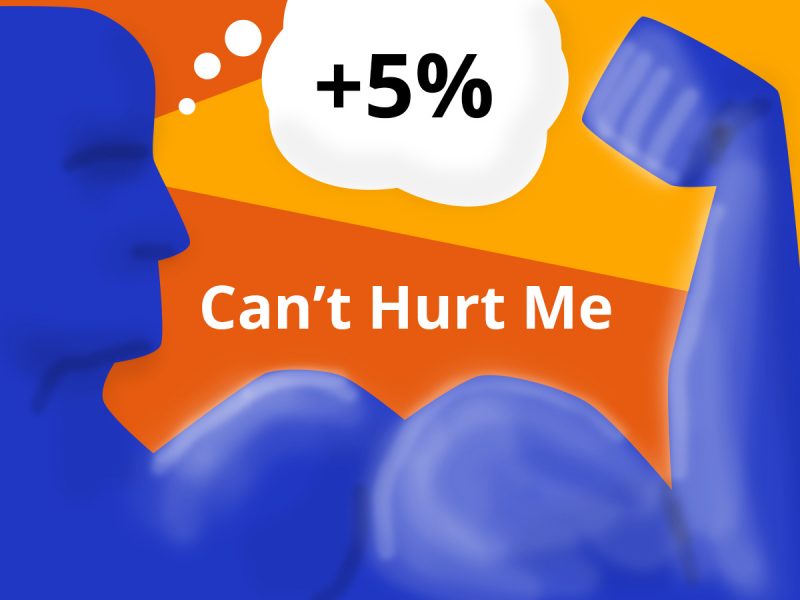
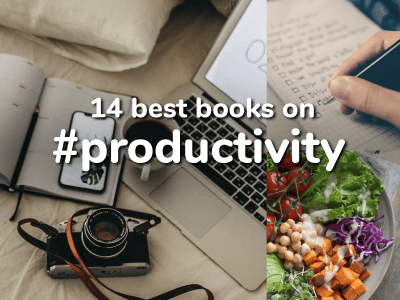

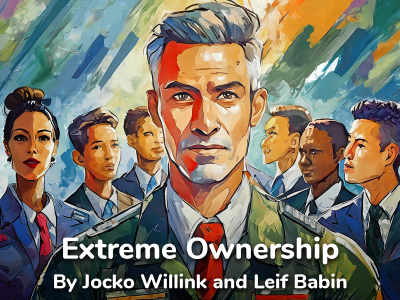



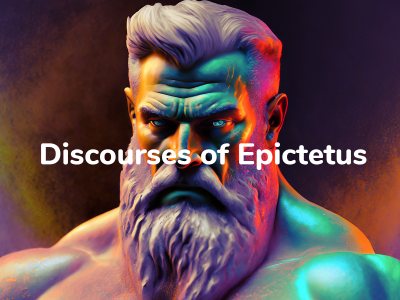
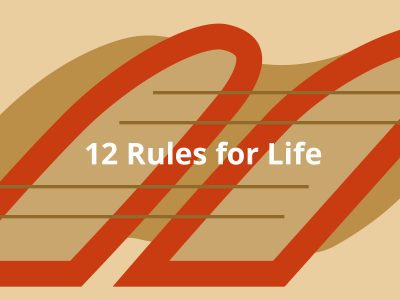
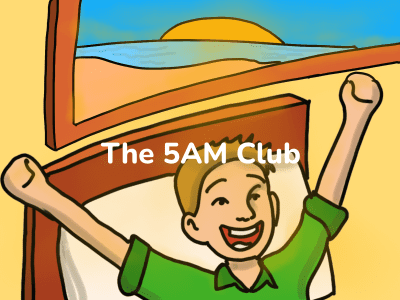

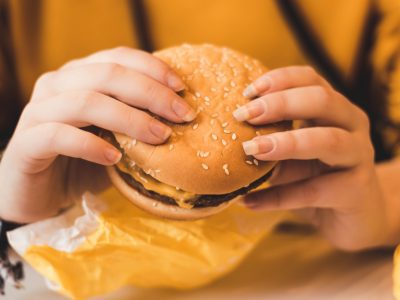






why does my progress bar not reach 100% ?
I’ve made a small update to the progress bar feature, so it should reach 100% sooner in the page. Keep in mind the progress bar saves the last position in the page that you scrolled to, so if you want to reach 100% then avoid scrolling back up the page at the end, just tap the Home link/button.